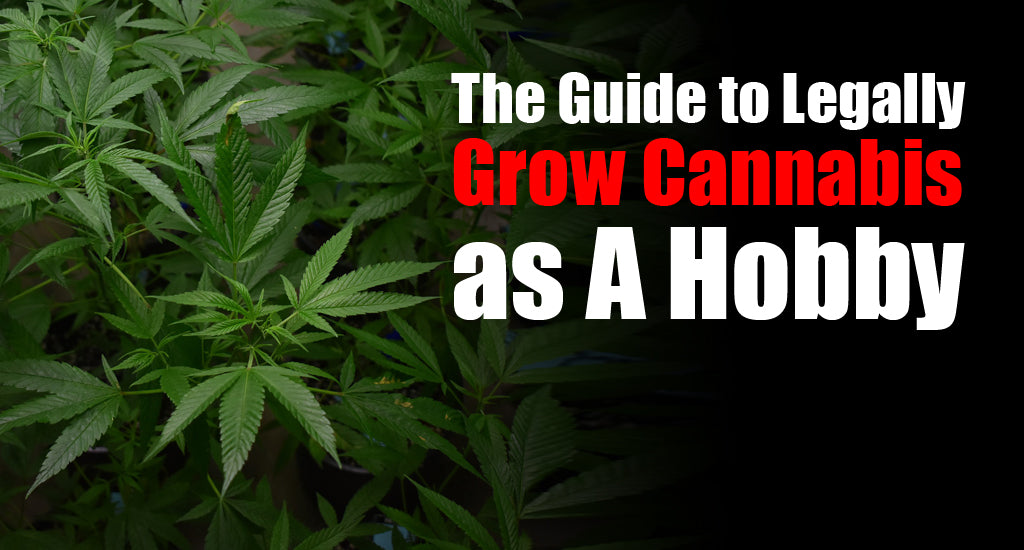
Indoor Oasis: Setting Up Your Home for the Perfect Cannabis Grow
Growing cannabis at home as a hobby has come a long way from being fully restricted, with more jurisdictions now allowing cultivation. There has never been a better time in these legal states to take up growing for pleasure.
Know the law
Even though marijuana remains off-limits at the national level in the United States, a growing number of states have embraced it for adult use, charting their own course into cannabis legalization. Colorado and Washington led the charge in 2012, setting a precedent for other states to follow in legalizing cannabis for adult consumption.
Interestingly, over half of these trailblazing states have green-lighted the cultivation of cannabis at home, albeit with certain caveats in place. For starters, your home-grown stash isn't meant for the marketplace; personal use is the name of the game here. While you're allowed to cultivate up to an ounce (28.5 grams) of cannabis for your own use, don't think about taking your harvest on a road trip outside your home.
Home growers are typically permitted to nurture up to six plants in their personal space. However, discretion is key — make sure your green thumb activities are out of sight from nosy neighbors or passersby since public cultivation is a no-go.
But here's where it gets interesting: the rules of the home-growing game vary significantly from state to state. Some states, regardless of whether cannabis use is for medical relief or just for kicks, don't distinguish between growing cannabis for personal use and cultivating it for commercial purpose.
- Alaska
- Legal for medical and recreational use.
- Adults 21+ can possess, grow, and gift up to six plants (only three mature at any time).
-
Maximum of 12 plants per premises, with no more than six mature.
- Arkansas
- Strict penalties for recreational use.
-
Medical marijuana legal since May 2019, with over 30 dispensaries.
- Arizona
- Cultivation only for medical purposes by qualifying patients/caregivers.
-
Must be grown in an enclosed, locked space; up to 6 plants.
- California
- Up to six plants for recreational use.
-
No limit on plant number for medical cultivation within 100 square feet.
- Colorado
- Allows growing six plants for adults 21+ (three mature at a time).
-
Caregivers can grow up to 36 plants for up to 5 patients.
- Connecticut
- Recreational use not legal, decriminalized possession under half an ounce.
-
Medical use permitted with state MMJ card.
- Delaware
-
Medical patients and caregivers can purchase but not grow.
- Hawaii
- "329" cardholders can grow ten mature plants.
-
Recreational users can grow up to six plants (three mature).
- Illinois
- Recreational use legal since January 2020.
-
Cultivation limited to licensed cultivation center agents.
- Louisiana
- Medical marijuana overseen by the Louisiana Department of Agriculture and Forestry.
-
Cultivation limited to designated university departments.
- Maine
- Legal for recreational and medical use.
-
Up to six mature plants for cultivation; more liberal medical marijuana laws.
- Maryland
-
Medical use allowed, no cultivation for patients/caregivers.
- Massachusetts
- Legal for recreational and medical use.
-
Six plants per household, or 12 with more than one adult.
- Michigan
- Legal for recreational and medical use.
-
Up to 12 plants for personal cultivation.
- Missouri
-
Medical use only, with cultivation permitted up to six mature plants.
- Montana
- Medical use allows for four mature plants and seedlings.
-
Higher limits for households with multiple cardholders.
- Nevada
- Recreational and medical use legal.
-
Cultivation allowed if living more than 25 miles from a dispensary, up to 12 plants per household.
- New Hampshire
-
Decriminalized personal use; medical use permits cultivation of up to six plants.
- New Mexico
-
Medical use allows for up to 16 plants, including four mature.
- New York
-
Medical use legal, no cultivation for personal or medical use.
- North Dakota
-
Medical use only, no cultivation allowed.
- Oklahoma
-
Medical use legal, details on cultivation not provided.
- Oregon
- Recreational and medical use legal.
-
Up to four plants for personal use; caregivers can grow for up to eight patients.
- Rhode Island
-
Medical use allows for up to 12 plants and 12 seedlings.
- Vermont
- First to legalize recreational use via state legislature.
-
Up to nine plants, with two mature.
- Washington
- Recreational and medical use legal.
-
Cultivation limited to medical patients and designated providers.
- Washington D.C.
- Recreational use legal.
- Up to six plants per adult, with a household maximum of 12.
Related article: 5 Reasons Why You Should Grow Your Own Weed
Choosing what and how to grow
The variety of cannabis seeds available has never been more abundant, offering a wide range of options for growers. Autoflower seeds, known for their simplicity and ease of cultivation, are particularly appealing to those new to the hobby. These seeds are less demanding, making them a perfect match for novice growers.
Starting autoflower seeds in early spring is ideal. They flourish in the long summer days, utilizing the abundant natural light to maximize yields.
Autoflower strains also have the advantage of requiring fewer nutrients. Their compact size and shorter vegetative cycle mean they're low maintenance compared to other strains.
In the world of cannabis cultivation, there are two primary approaches: growing from seeds or using clones. Commercial growers often opt for cloning, selecting the strongest plant from a crop of a single strain to ensure consistent quality and uniformity for mass production.
However, for most home growers, starting with seeds is far more practical. It not only offers the excitement of the growing process but also leads to a robust crop with more reliable genetics.
The main challenge with seeds is the uncertainty of the plant's sex. Typically, a pack of cannabis seeds will include both male and female plants.
To sidestep this issue, many growers choose feminized seeds. These seeds are engineered to produce only female plants, which are prized for their THC-rich buds, ensuring that every plant contributes to the harvest.
Related article: Best Cannabis and Hemp Seed Banks
Preparing the growing space
In most states, local regulations will guide your decision on where and how many cannabis plants you can grow indoors. Choosing the right space is crucial because an indoor cannabis plant can grow up to five feet tall and three feet wide.
Before setting up your grow area, consider a few key questions to ensure it's suitable for your cannabis plants. Ask yourself about the air circulation quality, whether the space requires significant modifications, and if it's spacious enough to accommodate one to six plants. These considerations are essential for a successful indoor cannabis garden.
Lighting plays a pivotal role in indoor cannabis cultivation, affecting the plant's growth rate and yield. With the right indoor lighting setup, you can harvest up to three times a year, far surpassing the yield of outdoor cultivation. The choice of lighting—HID, LED, or fluorescent—can significantly impact your harvest's quality and quantity.
LED lights are a top choice for many growers due to their energy efficiency and lower heat output, although they come with a higher initial cost. On the other hand, fluorescent lights offer a cost-effective solution with a broad light spectrum, but they may not be as powerful as LED or HID options. For those considering an alternative, greenhouses offer a balanced environment, harnessing natural sunlight while providing protection and controlled conditions for optimal growth.
Finally, soil quality cannot be overlooked. Opt for soil free from chemical fertilizers and enriched with essential nutrients to support healthy cannabis growth. This holistic approach to preparing your indoor growing space, from air circulation and lighting to soil quality, sets the foundation for a fruitful cannabis cultivation journey.
Related article: A Step by Step Guide - Growing Weed Indoors for Beginners
Conclusion
The evolution of home cannabis cultivation marks a significant shift from prohibition to acceptance in many states, offering enthusiasts a legal avenue to explore their green thumbs. With states like Colorado and Washington leading the way, the landscape for personal cannabis growth has expanded, allowing individuals to grow up to six plants for personal use. This move towards legalization underscores a growing acknowledgment of cannabis's benefits and a respect for individual rights within the confines of the law.
Key to successful home cultivation is a thorough understanding of local regulations, which vary widely but generally aim to balance personal freedom with community standards. Options like autoflower and feminized seeds cater to both beginners and seasoned growers, simplifying the cultivation process and ensuring a rewarding harvest. The choice of growing methods, alongside considerations for lighting, air circulation, and soil quality, highlights the personalized nature of home cannabis cultivation.
In essence, the trend towards home cultivation reflects broader societal acceptance and a desire for personal involvement in the cannabis journey. It’s a testament to the plant's enduring appeal and the evolving legal and social landscapes that frame our relationship with cannabis. As laws continue to evolve, so too will the opportunities for enthusiasts to engage in this ancient practice within the modern context of legal cultivation.



